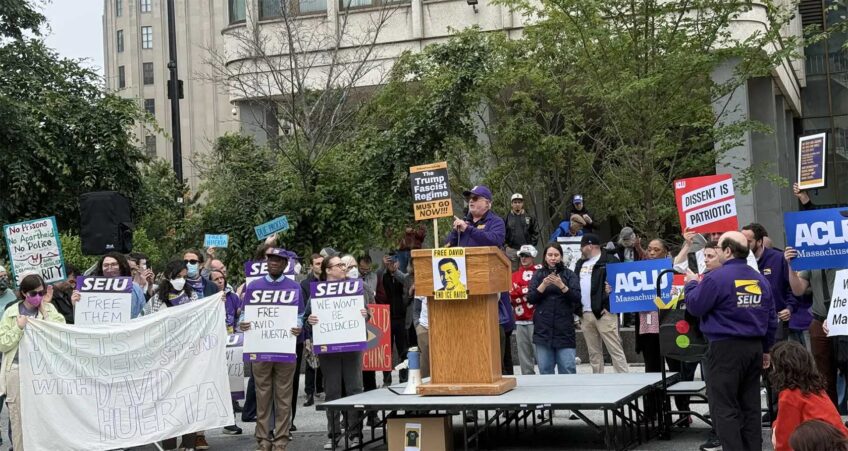City committee to discuss displacement and gentrification in Rox.
Councilor Kim Janey calls for hearing, community engagement and sustainable solutions
District 7 Councilor Kim Janey has ordered a hearing on gentrification and displacement in Roxbury.
Before all 12 of her fellow councilors at the Sept. 12 city council meeting, Janey, who represents parts of Dorchester and Roxbury, introduced the hearing order, calling for collective action from city officials, housing rights activists and residents experiencing displacement in her own neighborhood.
“With this hearing order, I want us to explore new and innovative ways to create and maintain affordable housing,” said Janey, who acknowledged that gentrification and displacement are not unique to Roxbury, pointing to the development of East Boston, Chinatown and South Boston. She also recalled witnessing their impact on property prices and community unity in the South End, where her family once owned a brownstone on West Canton Street.
Janey warned that the same fate, namely soaring property prices and the displacement of long-term residents, may befall Roxbury if considered action is not taken soon. “What we see right now is much of what we saw back in the ’80s in the South End,” Janey told the Banner following the council meeting, “and if we’re not intentional about doing something about it we will end up with the same result.”
Data released in conjunction with Imagine Boston 2030, Mayor Martin Walsh’s citywide master plan for development and growth, suggests Janey’s predicted future for Roxbury may become a reality. According to the report, housing prices in Roxbury increased almost 70 percent between 2010 and 2015, nearly double the rate at which property prices increased across the entire city, which was 36 percent over the same period.
Causes
As Roxbury’s popularity with developers continues, the sale of existing one-to-two-bedroom homes depletes the neighborhood of potentially valuable housing stock, denying residents the opportunity for generational wealth, said Janey.
“As the population grows in Roxbury, we have to make sure that longtime residents who grew up in this community can continue to call Roxbury home,” she said, while adding that new residents are still welcome in the neighborhood.
Stagnating wages have accompanied rising housing costs, leaving many Roxbury residents rent burdened, with 21 percent spending more than half of their salary on rent, according to the Imagine Boston 2030 report. Figures released by the Boston Planning and Development Agency suggest that 81 percent of properties in Roxbury are renter-occupied, making the community particularly vulnerable to displacement and eviction. Recalling conversations with constituents and neighbors, Janey said, “These are the faces of Roxbury, and the community we have built together is in jeopardy.”
Solutions
It is hoped that the hearing, which will be scheduled at a later date by the Committee on Housing and Community Development, will be a chance for stakeholders, including displaced residents and advocacy groups like Reclaim Roxbury and the Mass Alliance of HUD tenants, to discuss long-term solutions to strengthen the stability of the community.
One solution Janey has proposed is the redistribution of property tax earnings from Boston’s increasing number of luxury apartment buildings, including the new Four Seasons Hotel and Residences at One Dalton Street. While this money should continue to help the city pay for schools and infrastructure, some of the cash should be allocated for affordable housing, said Janey. She also recommended a similar reallocation of linkage fees paid by commercial developers on properties larger than 100,000 square feet.
Solutions to gentrification and displacement also rest on a redefinition of affordable housing, and on ensuring a range of options are available for residents across different income brackets, Janey added. Ultimately, she wants the committee and the hearing to consider this question: “How do we do development without displacement?”
Echoing sentiments expressed by local activists, whom she thanked publicly for their involvement during the meeting, Janey told the Banner, “We have to send a clear message that Roxbury is not for sale.”
“Roxbury will not be developed absent the engagement of residents,” said Janey, “creating a clear vision for their community and a vision in which residents can stay in their neighborhood.”






